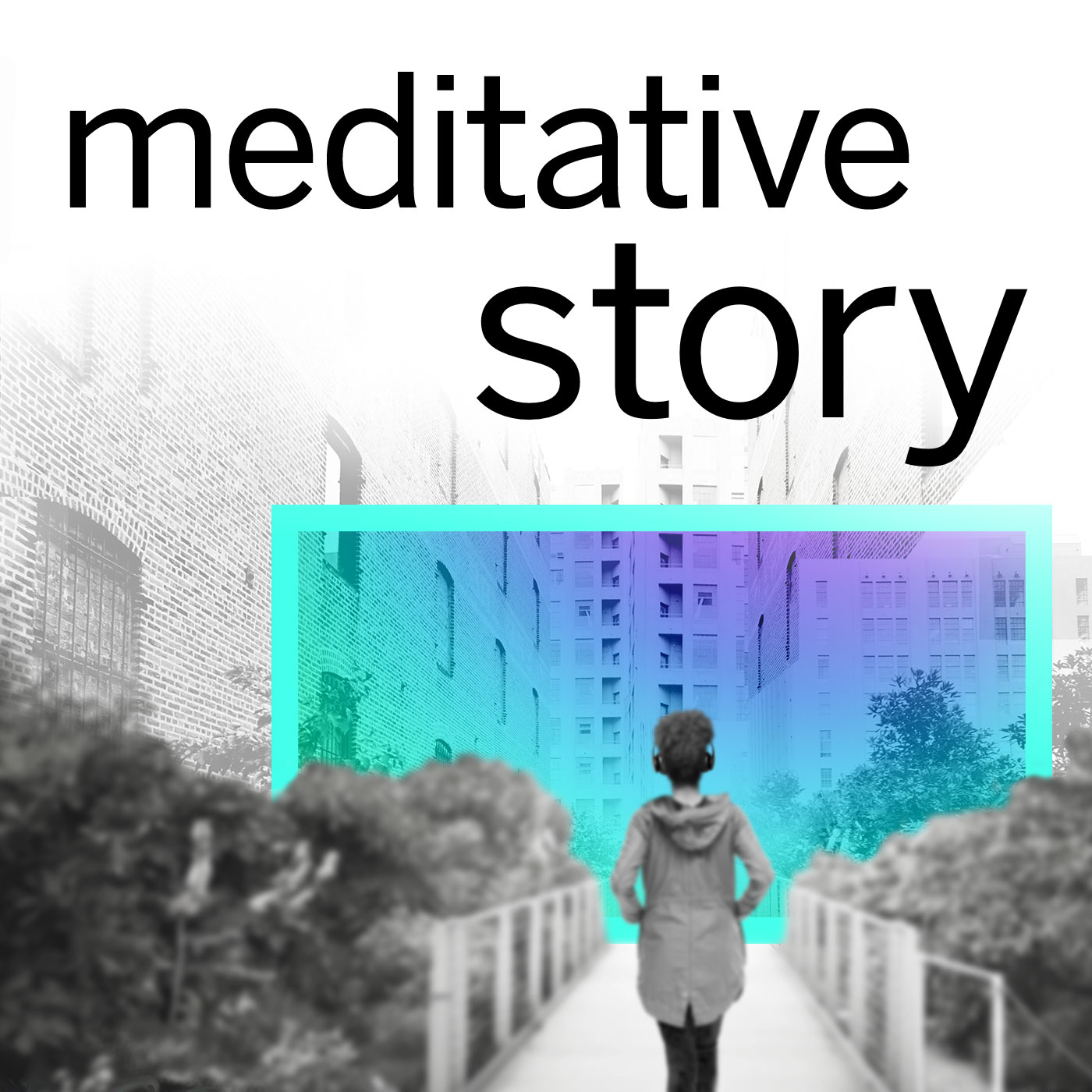
New podcast premiere! “Meditative Story” is a new, immersive mindful listening experience we’ve created with WaitWhat, with gracious support from Salesforce. Subscribe here to listen to the latest episode.
By the second day at a recent five-day silent meditation retreat, the mental static of my everyday thoughts had mostly passed.
The silent mandate meant the whole shebang: no reading, writing, talking, internet, or anything but instruction and focus. It was intense and challenging, but rewarding.
The 9am session switched techniques from focusing on breathing to body scans, observing sensations. Even after one or two scans, I found I could hardly sense anything subtler than, say, my shirt on my shoulders. It was frustrating.
I sensed how tense my whole back, shoulders, and neck were. I could only sense any nuance in my back muscles around the bottom of my rib cage. Sensations from areas around my inner muscles were hidden by the tension in the outer ones.
But when I focused, I could feel the outer muscles relax. I moved my back to experience the relaxation. That motion revealed tension higher up that was previously masked by tension in lower muscles. As I relaxed each higher muscle, I could sense the tension in the next set of muscles.
That session ended at 11. After lunch, I restarted in a private room where I could focus more than in the group room I was in before.
Muscle by muscle, as I moved my attention up my back on successive scans, I found I could relax each next muscle up. I didn’t try to relax them. I only paid attention, and they relaxed. If you focus on your back or shoulders now, you’ll probably release tension that you notice, whether you intend to or not.
Tension vanished. I breathed newly unhindered. My chest opened. It felt like old, brittle, dry rubber bands had turned to clouds. I laughed, and felt like a child — free.
As each muscle relaxed, I could feel the sensations on my skin near the muscle and within the muscle.
I moved my attention to my shoulders and neck. The tension in my neck, surrounded by more muscles, was harder to sense, to disentangle. Moving slightly — I don’t know if the technique allowed it, but I did it anyway — helped to locate tension. I focused on the edges I could sense. When they relaxed, I could focus on previously hidden muscle.
One by one, I focused on the edge of a muscle, sensed its tension, moved to highlight a given tension, observed it relax, and moved on to the next muscles.
The next thing I knew, the gong rang out, indicating that this 1:00 session had ended. The clock now said 2:15. Wow! I had gone for an hour and fifteen minutes unbroken. The next group sitting was 2:30, so I only had fifteen minutes break.
I walked — almost bounded — to the path in the woods by the meditation hall. I was alone. I felt so good I had to express it. I stretched my arms out wide.
I might have been embarrassed if anyone saw, but I had to. You have to let it out.
I remembered a picture of a friend that I had seen jumping for joy on the beach, mid-jump, with her arms and shoulders back, and her legs back too. I thought, “That’s how I feel. I want to jump like that because that’s how I feel.” So I looked around. I could see nobody. So I jumped like her.
I jumped for joy!
Jumping felt great. Not just because it’s fun, but because it expressed my feelings. It augmented my feelings. My heart beat stronger. Feeling better made me want to jump more, so I did, which made me feel better still.
When had I jumped for joy before? I couldn’t recall. Had I ever? How often do people jump for joy? Might I have gone my whole life without it if not for this moment?
Meditating later that day, I continued my pattern of finding tension and letting muscles relax, reaching increasingly protected ones.
This meditation led something about yoga to click: I had been trying to stretch muscles by pushing against their resistance. This technique was different: stretch to find the tension, then, once aware, let the muscle relax.
Before, when I couldn’t do a yoga pose, I would sacrifice my form to get around the tension. Now I saw that the point was to keep the form to become aware of the tension, with that awareness exposing what to release. The point of the poses was not to challenge me, but to reveal the tension. The work happened as much in my mind as in my body.
So I left the meditation hall to do some yoga poses. I was able to do a couple of poses that had felt, until then, impossible.
But now I’m getting past the jumping for joy part of the story. I could go on about awareness, discipline, focus, letting go, and other meditation stuff, but the jumping was the remarkable part this time.
Though I can’t help but mention that less than a week later, I found myself jumping for joy at a Yankees game at a brilliant bottom-of-the-ninth come-from-behind win.
Maybe I jump for joy more than I thought without realizing. I hope so.
Follow us here and subscribe here for all the latest news on how you can keep Thriving.
Stay up to date or catch-up on all our podcasts with Arianna Huffington here.

